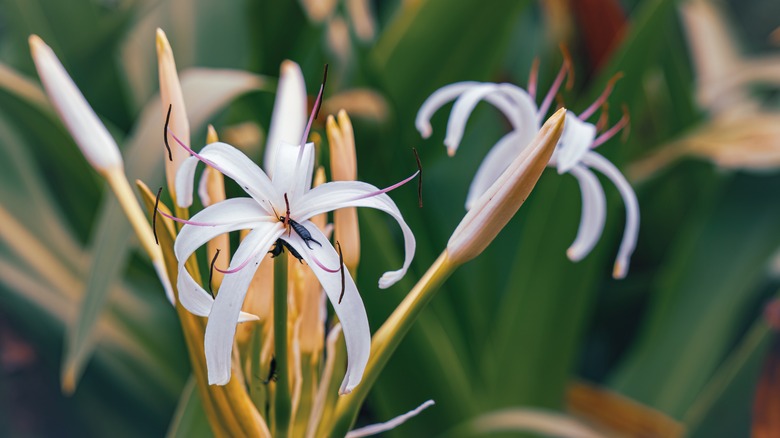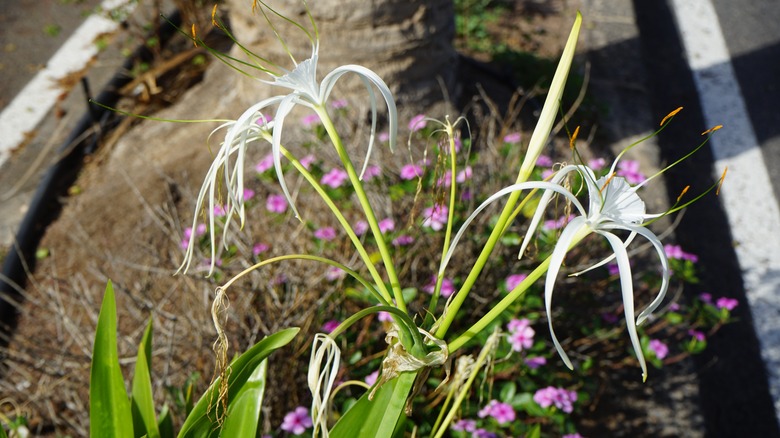The Best Time Of Year To Plant Spider Lily Bulbs
If you're looking to add some stunning spider lilies to your garden, timing is key. While you could technically plant the garden bulbs at different points during the year, there's a sweet spot that gives them the best shot at a strong, vibrant bloom — late summer to early fall.
Late summer to early fall is the best window for a major reason: It lines up with spider lilies' natural growth cycle. While these plants do not bloom during their first year, planting them during their natural blooming time helps you sync with their growth cycle, so you're more likely to see those stunning flowers when the time is right. And once the flowers have bloomed during late summer to early fall, their foliage will come out and soak up energy from the sun to gather nutrients for winter and the following year.
Planting the flowers in late summer to early fall is also great because it allows the bulbs to rest as temperatures drop. As mentioned, spider lilies need that dormancy period to recharge for the next growing season. If you plant them too early in the summer, they might bloom at the wrong time or not gather enough energy for future growth. On the flip side, if you wait too long into fall, frost might set in before the bulbs have a chance to root properly. Late summer or early fall strikes the perfect balance.
How to grow spider lilies during late summer to early fall
First things first, location is key. You want to find a spot in your garden that gets partial shade to full sun. Spider lilies are pretty flexible, but they love well-draining soil, so make sure you're not planting them in an area where water tends to pool after it rains. Once you've picked your spot, prepare your soil. Loosen it up a bit and toss in some compost or organic fertilizer to give those bulbs a little boost of nutrients. You're going to dig holes that are about 3 to 4 inches deep, and make sure you space your bulbs at least 6 to 8 inches apart.
After you've got your bulbs planted, give them a good soak to help the soil settle around them. After that first watering, you don't need to fuss over them too much. Overwatering can hurt more than help because spider lilies don't like sitting in soggy soil. Just keep an eye on the dirt and water only when it feels dry to the touch. As the weather starts to cool off, you might notice little green shoots poking out of the ground, which is always an exciting sign that things are going well.
Once winter rolls around, you're not going to see much action. Don't panic; this is totally normal. Your spider lily bulbs will stay dormant during the colder months. But as soon as spring hits, you'll get those gorgeous spidery blooms popping up. Just keep the occasional watering up as the plants grow, and you'll have a low-maintenance showstopper in your garden.

